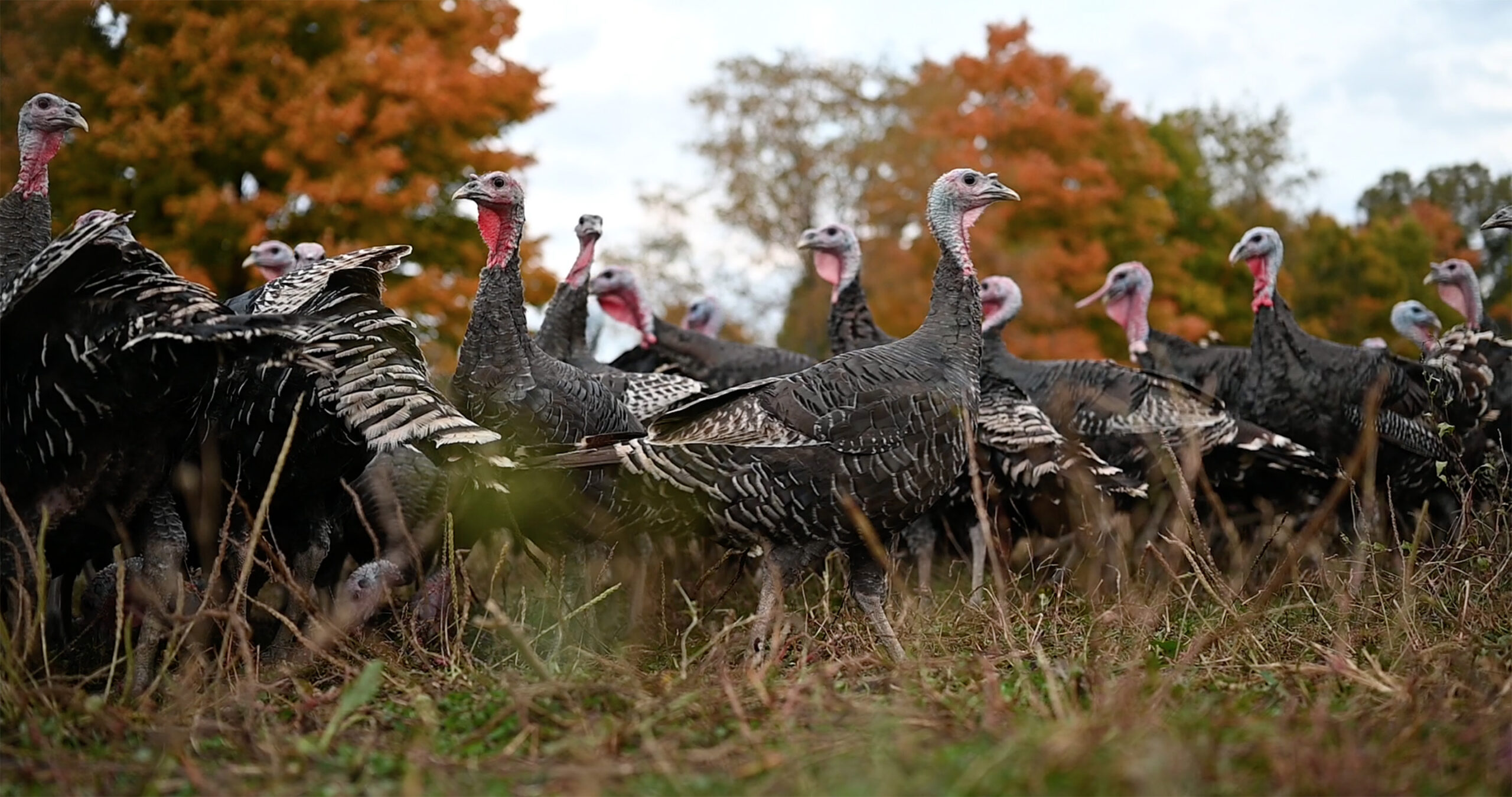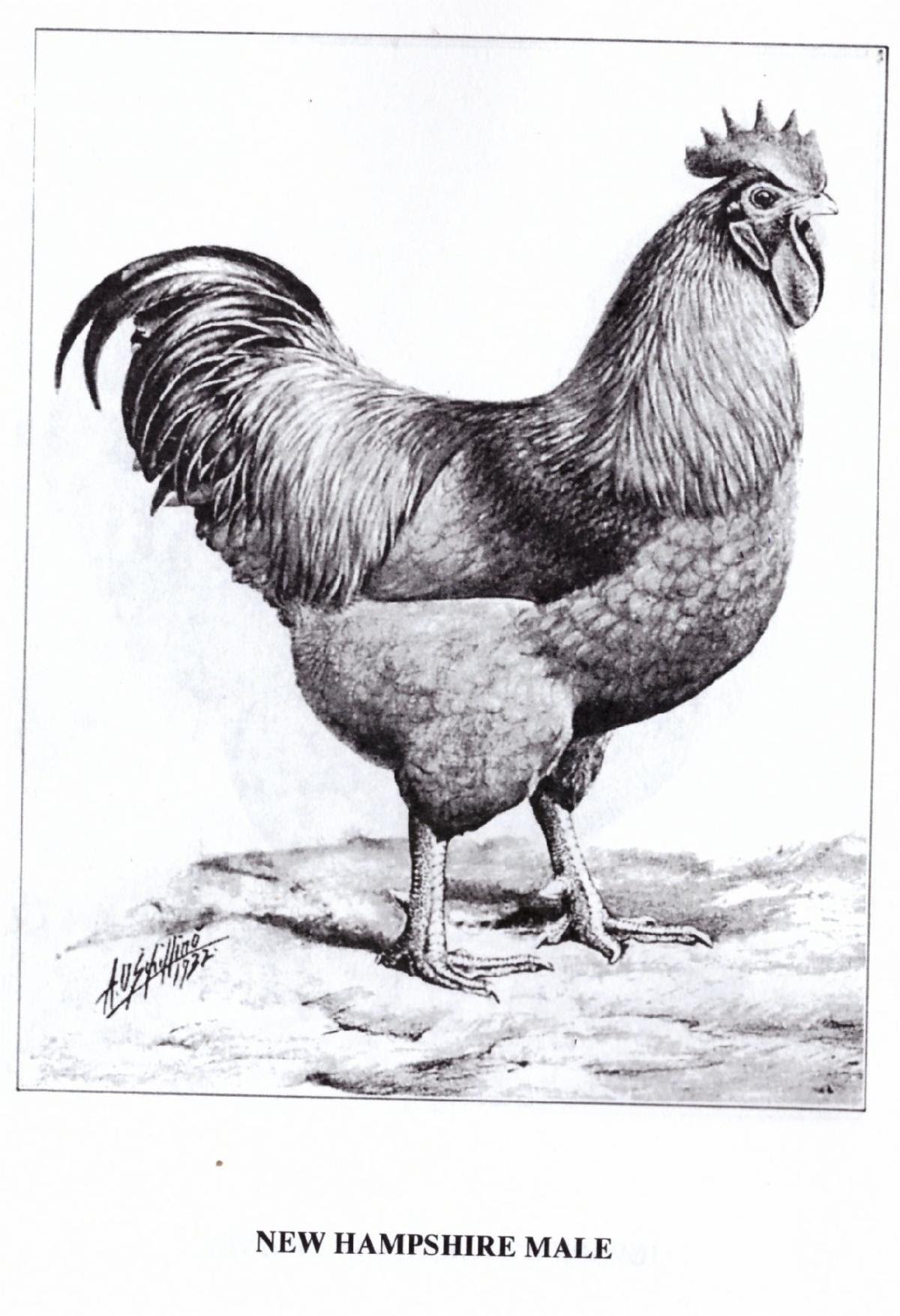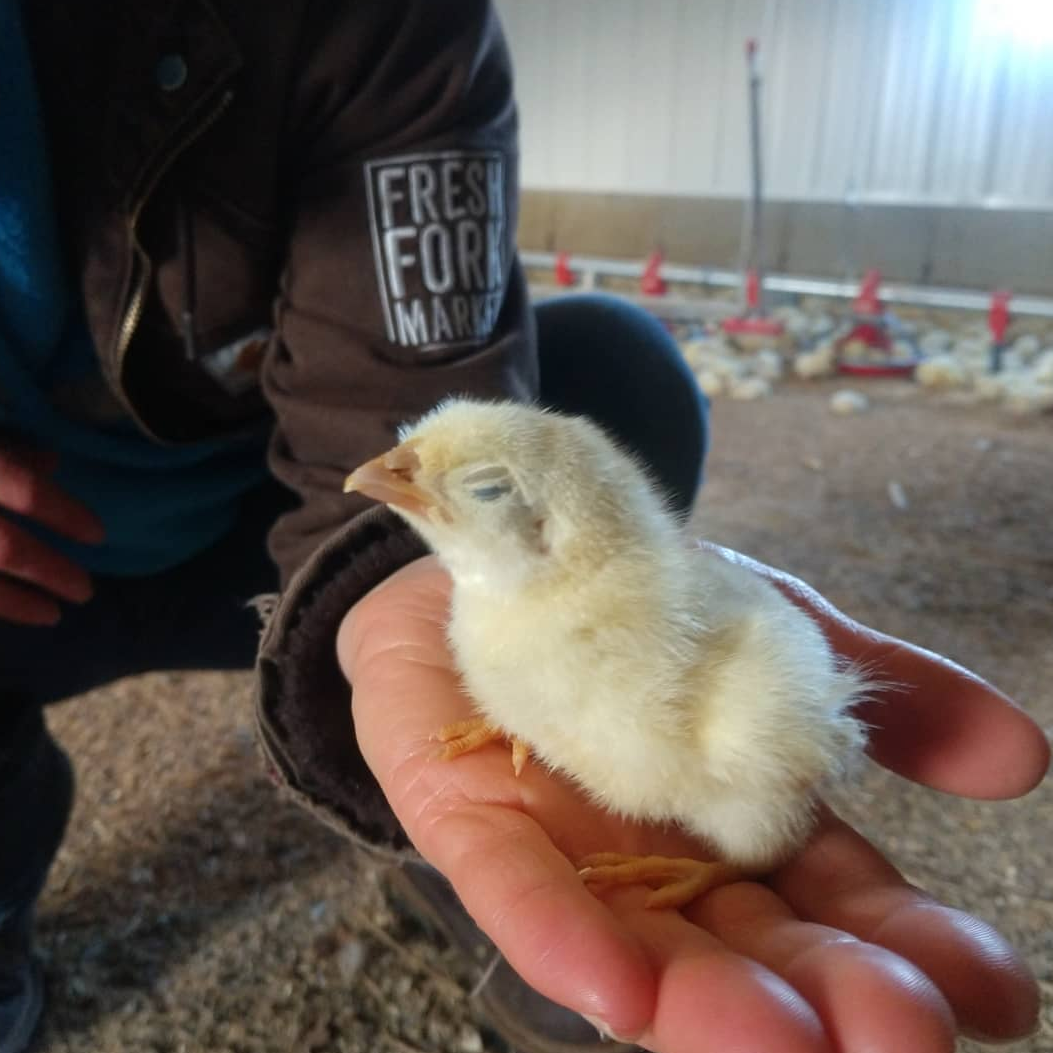Heritage Poultry
IT'S ABOUT BREEDS FROM THE PAST & GENETIC DIVERSITY TO PROTECT OUR FOOD SUPPLY
I’ve been trying to grow my flock of heritage turkeys. My Standard Bronze Heritage Turkeys are the pride of our Thanksgiving. Unfortunately, we only grow about 200 per year, and that number has been shrinking the last couple years as my laying flock gets older.
I’ve been searching for years for additional toms and hens to add to my breeding flock to prevent inbreeding and the genetic issues that come from that generation after generation. These birds are very rare, and I’ve been struggling to find the genetics.
Then I came across the Good Shepherd Livestock Conservancy in Kansas. They are starting a “fellowship” program to pilot sharing these genetics – carefully- with other standard breed farmers in the US. I was accepted as 1 of 15 farms in the country to their inaugural fellowship program. August 2022 was the first national conference. Below I'll reflect on some of what I learned.

what is a heritage turkey?
The Standard Bronze is an older breed – what’s called a Standard Breed (aka, Heritage) – that isn’t usually raised anymore for meat.
Why? They aren’t as economical as modern genetics. The birds are smaller, grow slower, and eat more feed per pound of gain. They have natural tendencies that are “annoying” to some farmers – roosting, flying, or maybe jumping up on the mirrors of your truck.
So, why bother? Many reasons, which I’ll touch on below, but it starts with the flavor. These birds develop more muscle from exercise and put on intermuscular and subcutaneous fat (in the meat and below the skin), meaning more flavorful dark meat and a more moist bird.
today's poultry starts in a lab
Below is a photo of our cornish cross meat birds raised on pasture. It is the standard genetics used in broiler barns across the country. We just raise them outside on organic pastures to promote foraging and exercise.
If I wanted to hatch my own Cornish cross, I couldn’t. These birds are genetically engineered (not genetically modified) in a lab by sequencing genomes and picking the specific recessive traits that produce a very fast growing bird. These traits, surprisingly, are those of dwarfism. They produce a full-size torso on shortened limbs, meaning that everything looks “meatier.” The easiest way to explain it is that the drumstick has the same amount of meat, but on a shorter bone. Same with the breast. This makes a more plump chicken that matches what today’s market is used to.
Why do I raise the Cornish cross? Well, it’s pretty much the only thing available. Further, it is also what today’s market desires – lots of tender white meat and less dark meat. It also cooks like Americans cook chicken – fast and with high heat. This is vastly different than how chicken was cooked 60 or 70 years ago.

i have experimented with standard breed chicken before
Standard Breeds are pure-breed birds recognized by the American Poultry Association. They are birds often tracing their roots back centuries. There are a few critical conditions: they can naturally mate and their offspring is of the same genetic makeup. That means that if I take a Rhode Island rooster and mate it with a Rhode Island hen, I get a Rhode Island chick that will be of the same body condition, colorings, and production capability. That isn’t true for the hybrid birds like the Cornish Cross or today’s hybrid egg layers.
Several years back, I experimented with Black Australorp chickens for laying. I bought a “straight run” from the hatchery, meaning half of the chicks would be hens and half roosters.
I had three hypotheses in mind:
1) I would raise the roosters as meat birds
2) The hens could go through a molt and lay eggs for at least a year longer than the hybrid birds
3) The hens, when done laying eggs, would be larger than the hybrid layers and be a good option for sausage production.
The more mature meat of the hen, in theory, would be ideal for sausage. Similar to old dairy cows or a bull, the older hen has less water in its meat and more protein. The structure of this meat is therefore capable of emulsifying with more water in an emulsified cooked product, such as hot dogs or bologna.
my experiement sounded good on paper...and at least cheaper than college
I lost money on this experiment - like most of my experiments. But, I prefer to think of it as cheaper and more valuable than what I spent to go to college. What I learned from the experiment was that the black Australorp wasn’t capable of the egg production of today’s hybrid birds. They ate as much and it cost me the same to produce less eggs.
Today’s consumer equates brown eggs to quality, even though the association has nothing to do with how the birds are raised or what it ate. It is genetic whether the bird lays brown or white eggs. I was getting less brown eggs for the same amount of feed. Could I reasonably ask for more money because my birds were less efficient but came from sustainable, purebred genetics? No, I couldn’t.
Second, the molt created a logistics issue. I had to have two flocks to maintain constant egg production while one was in molt and the other wasn’t. This was difficult.
Finally, the spent hen carcass wasn’t worth cutting up. The hens were small still and there wasn’t as much meat as I had hoped for. It cost more to cut the meat off the bone than the meat was worth. And, the roosters did get bigger than the hens, but still only 3.5 to 4 lbs. They took 20 weeks to get that big – more than double the age of a broiler – and in the end the meat was tough. The bird had to be cooked differently at that age.
why am i still thinking about standard breeds?
One thing I learned at the conference was that part of my problem was the genetics. I’ll explain by explaining the business model behind hatching chicks.
The male genetics help determine the fertility of the flock. If the rooster is from a hen with large egg size, high egg production, and good fertility, he will produce offspring with those same characteristics.
The female genetics determine the body confirmation – the size and shape of the bird – and rate of growth. A larger, heavier hen will produce fewer eggs but heavier, faster growing chicks.
So, if you are in the business of selling chicks, what is the most profitable model? Well, it is to have lean hens that eat less and produce more eggs. Afterall, most of these mail order hatcheries are supplying back yard enthusiasts who care more about a pretty hen than profitable egg production.
As part of a fellow in the program, I’ll have access to better genetics to grow a sustainable flock of standard breed chickens and turkeys.
We are a very fortunate, wealthy nation to be able to throw out chicks.
What? Yes, what do you think happens when laying hens are hatched? Statistically, half of the eggs are going to be males. The male won’t lay an egg, and the genetics are so specialized to produce a small hen that lays a lot of eggs, that the rooster is without value. Each year it is estimated that 4 billion day old chicks are literally thrown away.
Standard Breed chickens, on the other hand, are dual purpose. Some are better as egg layers and some better as meat type, but all are OK for both.
In the ideal scenario, we would raise the hens for eggs, harvest young roosters as small broilers at 8 weeks of age, and take some males and turn them into capons – neutered males – and raise them even longer and larger for a traditional roaster chicken and for sausage production.
you are an important part of the equation in changing the poultry model
The Heritage Turkey market is just one piece of the puzzle. Next, I need to slowly experiment with raising standard breed chickens to replace our hybrid layers and hybrid meat birds.
I know I’m not going to change the American attitude for cheap food, and it’s going to be an uphill struggle to sell a chicken that cooks differently, costs more, and yields less.
But, hopefully a few of you will be willing to support the change. And, if the industry grows, in theory the prices should come down with size and efficiency.
In the meantime, if you would like to try true heritage chicken, please try that from Frank Reese’s Good Shepherd Poultry Ranch available at Heritage Foods online.


